Turkish cuisine is regarded as the third biggest cuisine in the world. In the process of Rome, Byzantine and Ottoman cultures, our cuisine was enriched with the variety a rising from minorities and migrations.
|
|
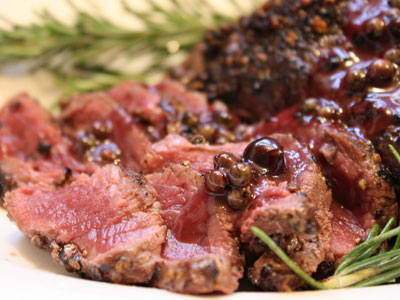 The meat meal cooked on fire or in oven is usually called as kebab. It has got a number of variations and made of lamb or veal. The meat meal cooked on fire or in oven is usually called as kebab. It has got a number of variations and made of lamb or veal. |
|
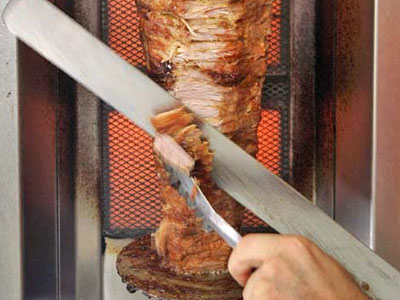 Doner is one the authentic tastes of turkish cuisine, which is cooked by rotating the meat bulk on a longs kewer against fire. Its type served with yoghurt and melt butter is called Iskender. Doner is one the authentic tastes of turkish cuisine, which is cooked by rotating the meat bulk on a longs kewer against fire. Its type served with yoghurt and melt butter is called Iskender. |
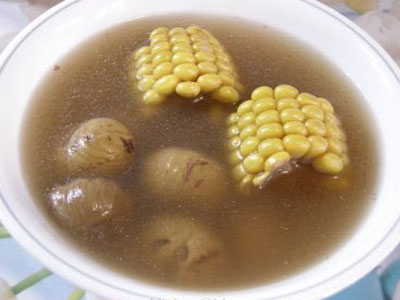 Chestnut and corn are the most common Street flavors of Turkish cuisine. The corn consumed in summer is substituted by chest nut in winter. On the corners of streets chestnut stoves take the place of corn stalls. Chestnut and corn is either roasted on fire or boiled. Chestnut and corn are the most common Street flavors of Turkish cuisine. The corn consumed in summer is substituted by chest nut in winter. On the corners of streets chestnut stoves take the place of corn stalls. Chestnut and corn is either roasted on fire or boiled. |
|
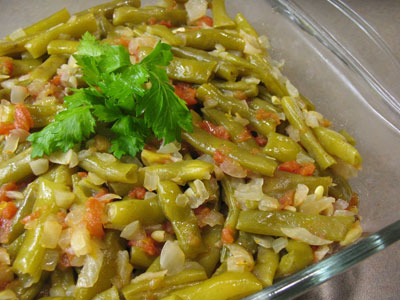 Vegetables dishes with olive oil, these dishes, although they are regarded in the category of “cold starters” in the world, are in the main course category in Turkey. Particularly as the most proper and lightest dishes for hot summer days, these meals with olive oil make Turkey the only country using this consept. They are the most popular dishes of tukish table, which are preapared by mixing and cooking tomatoes, onions, pepper, olive oil with almost all kinds of vegetables such as aubergine, leek, okra, bean, zucchini and purslane. Vegetables dishes with olive oil, these dishes, although they are regarded in the category of “cold starters” in the world, are in the main course category in Turkey. Particularly as the most proper and lightest dishes for hot summer days, these meals with olive oil make Turkey the only country using this consept. They are the most popular dishes of tukish table, which are preapared by mixing and cooking tomatoes, onions, pepper, olive oil with almost all kinds of vegetables such as aubergine, leek, okra, bean, zucchini and purslane. |
 As the starters of Turkish cuisine, the soups include hundreds of types in different regions. But tripe soup is the last zest of drinking boutse specialy. Tripe soup offal restaurants are open almost till the morning. It is for palate of each person by its different types enriched with lamb's feet, chick pea and etc. As the starters of Turkish cuisine, the soups include hundreds of types in different regions. But tripe soup is the last zest of drinking boutse specialy. Tripe soup offal restaurants are open almost till the morning. It is for palate of each person by its different types enriched with lamb's feet, chick pea and etc. |
|
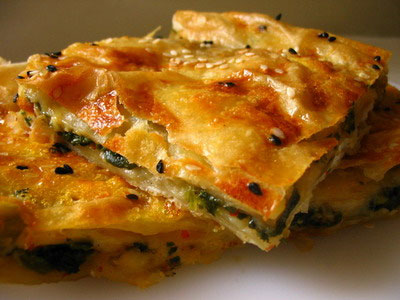 Borek is a major category with its various types in the pastry. Its gets different names according to its filling in gredients and cooking style. The dough is used directly or as phyllo while preparing borek. It can be eaten at all regions. And flat bread with different fillings can be regarded in the pastry. It is an significant type of last food cooked in oven susing meat, minced meat, kaşar cheese, pepperoni and egg as filling in gredients. Borek is a major category with its various types in the pastry. Its gets different names according to its filling in gredients and cooking style. The dough is used directly or as phyllo while preparing borek. It can be eaten at all regions. And flat bread with different fillings can be regarded in the pastry. It is an significant type of last food cooked in oven susing meat, minced meat, kaşar cheese, pepperoni and egg as filling in gredients. |
 Yoghurt is considered as the most important contribution of Turkish cuisine toother cuisines in the world. It is prepared by adding yeast to boiled milk after it has become warmer and yoghurt can be consumed as plain, and with fruit and sugar as well. Besides, it is used as a garniture for main course and in preparing some dishesor soups. Yoghurt is considered as the most important contribution of Turkish cuisine toother cuisines in the world. It is prepared by adding yeast to boiled milk after it has become warmer and yoghurt can be consumed as plain, and with fruit and sugar as well. Besides, it is used as a garniture for main course and in preparing some dishesor soups. |
|
|
|
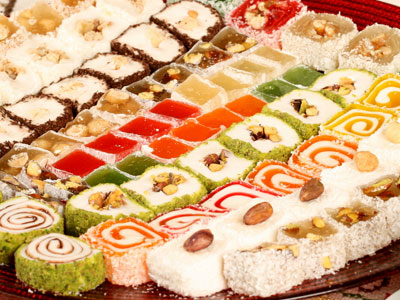 Lokum ( Turkish Delight) is a Turkish candy made of water, sugar and strach. Lokum was derived from the word “rahat ul-hulkum” in Ottoman Turkish, meaning throat relaxing and this delight has been known in Anatolia since 15th century. Lokum ( Turkish Delight) is a Turkish candy made of water, sugar and strach. Lokum was derived from the word “rahat ul-hulkum” in Ottoman Turkish, meaning throat relaxing and this delight has been known in Anatolia since 15th century. |
|
 Baklava is a significant pastry dessert included in Turkish cuisine primarily, as well as in Middle Eastern, Balkan and South Asian cuisines. Although its origin is debatable, baklava has its latest form in Ottoman cuisine. Baklava is made of thin pastry phyloss and of grinded walnut, pistachio, nut, Turkish cream put between these according to the region. It is usually sweetened with sugar sorbet. Baklava is a significant pastry dessert included in Turkish cuisine primarily, as well as in Middle Eastern, Balkan and South Asian cuisines. Although its origin is debatable, baklava has its latest form in Ottoman cuisine. Baklava is made of thin pastry phyloss and of grinded walnut, pistachio, nut, Turkish cream put between these according to the region. It is usually sweetened with sugar sorbet. |
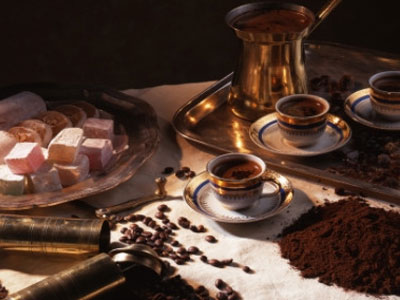 As a strong drink, Turkish coffee can be drunk with no sugar, little sugar, medium sugar of much sugar. The distinctive feature of it is that it issimmered, served in small porcelain cups with scum on top. It used to be prepared in copper coffee pots on embers but today automatic machines are used for coffee making. As a strong drink, Turkish coffee can be drunk with no sugar, little sugar, medium sugar of much sugar. The distinctive feature of it is that it issimmered, served in small porcelain cups with scum on top. It used to be prepared in copper coffee pots on embers but today automatic machines are used for coffee making. |
|
 Tea is the most consumed drink in dailylife. To have a better taste, it is necessary to steep well. It is real pleasure to drink tea in the cafes by these a in Istanbul and it is the most popular drink in ferries. It is served best in thin belly glasses, and in some places it is served in a samovar not in a tea pot. Different kinds of herbal tea are also very popular today. Linden, fennel, and sage tea are the most preferre dones. Tea is the most consumed drink in dailylife. To have a better taste, it is necessary to steep well. It is real pleasure to drink tea in the cafes by these a in Istanbul and it is the most popular drink in ferries. It is served best in thin belly glasses, and in some places it is served in a samovar not in a tea pot. Different kinds of herbal tea are also very popular today. Linden, fennel, and sage tea are the most preferre dones. |
When drinks were being prepared at home about 50 or 60 years ago, lemon, various types of fruit and the naromatic plants were added into these drinks. Sherbet which is preferred especialy during summer used to be filled in special glass containers and ice would then be added in it. Cherry syrup, rose syrup, lemon syrup, tamarind syrup, violet syrup and almond syrup (sübye) are still being served in patisseries and cafes today. |